Flower Glossary is reader-supported. When you buy through links on our site, we may earn an affiliate commission.
Flowers feature heavily in Chinese art and history, and naturally, certain flowers have blossomed into symbols of Chinese culture, whether officially or unofficially.
Home to one of the oldest and richest cultures globally, China has been shaped by a complex interplay of social, religious, and philosophical influences rooted in its ancient past.
No country values flower symbolism quite like China does, from its plum blossom-lined paths to its historical symbols of osmanthus flowers in poetry and paintings.
As well as being known for their metaphorical meanings, flowers are also commonly used in Chinese cuisine and medicine, from the healing powers of lilies to the sweet herbal tea made from Osmanthus Fragrans.
While most countries may have one or two commonly associated floral symbols, China has many. In this article, we’ll be exploring the top 12 flowers in Chinese culture and discussing their meanings.
Table of Contents
1. Osmanthus Flowers
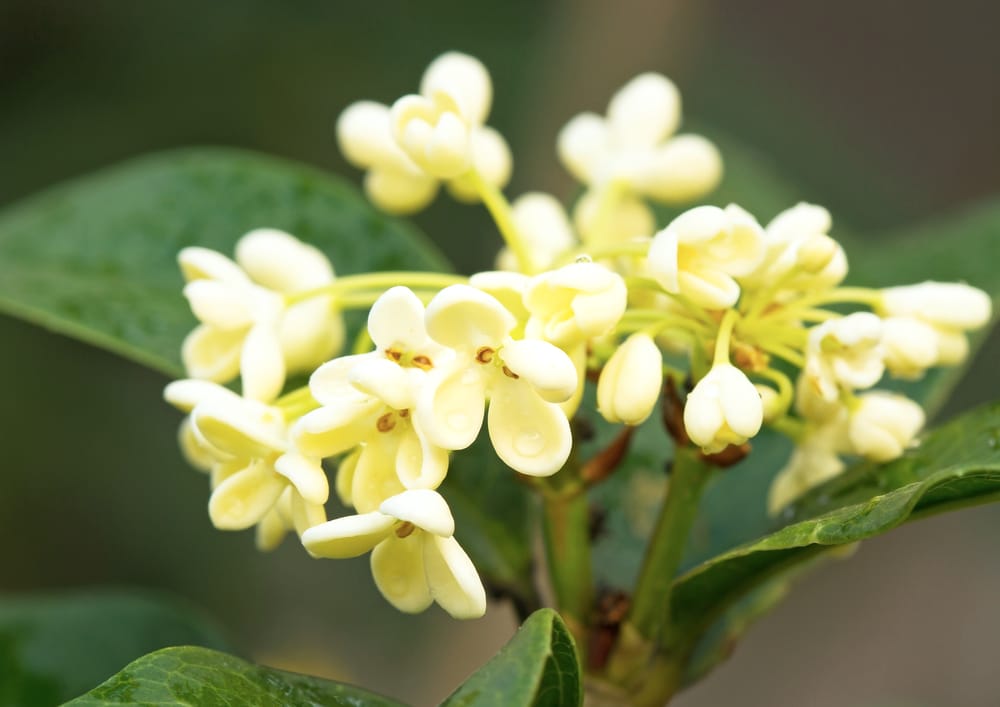
Osmanthus is one of the most famous Chinese flowers and is native to Asia, found in the Himalayas and throughout southern China in Guizhou, Sichuan, and Yunnan as well as Taiwan, southern Japan, and even as far south as Cambodia and Thailand.
In Chinese culture, the fragrant white flower of Osmanthus is known as the “city flower”, representing the cities of Hangzhou in Zhejiang Province, Suzhou in Jiangsu Province, and Guilin, in Guangxi Province.
For hundreds of years Osmanthus has been depicted in Chinese poetry and is frequently used in Chinese food as well as to make tea.
2. Lotus flower
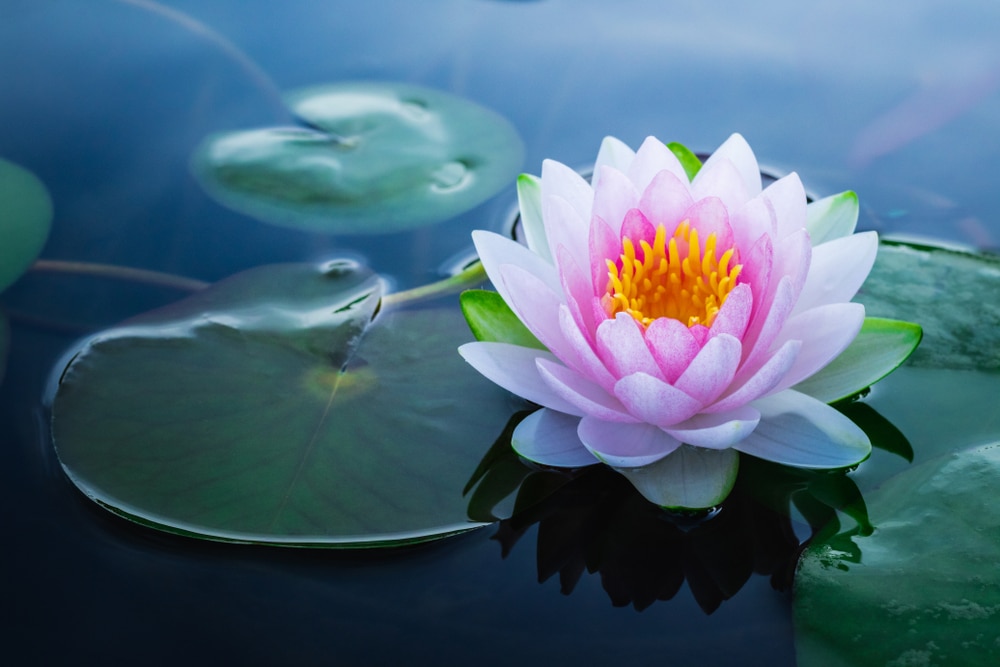
The lotus flower – also known as Nelumbo nucifera, or informally as a ‘water lily’ – is usually the first flower that springs to mind when thinking of Chinese culture. The lotus is also central to Buddhism, as it is recognized as the holy seat of Buddha.
The Lotus flower symbolizes purity of the heart and mind, as well as perfection, as it can grow even in mud and adverse conditions.
Under the right circumstances, the seeds of the lotus flower can remain viable for many years, and the oldest recorded lotus germination was from seeds that were 1,300 years old and recovered from a dry lakebed in northeastern China.
With this in mind, it’s easy to understand why the Chinese regard this persistent flower as a symbol of longevity.
3. Chrysanthemum Flowers

Also known as Dendranthema morifolium, Chrysanthemums are native to China and were first cultivated as a flowering herb as far back as the 15th century BC.
Since 1630, over 500 cultivars had been recorded, and by 2014, it was estimated that there were over 20,000 cultivars in the world and about 7,000 cultivars in China.
Associated with duration and longevity, Chrysanthemums are identified as one of the Four Gentlemen (四君子) in Chinese and East Asian Art.
The plant is particularly significant during the Double Ninth Festival.
Chrysanthemums also signify intellectual accomplishments, cleansing qualities, and longevity of life, and are therefore often gifted to old people to symbolize a strong life.
4. Lilies
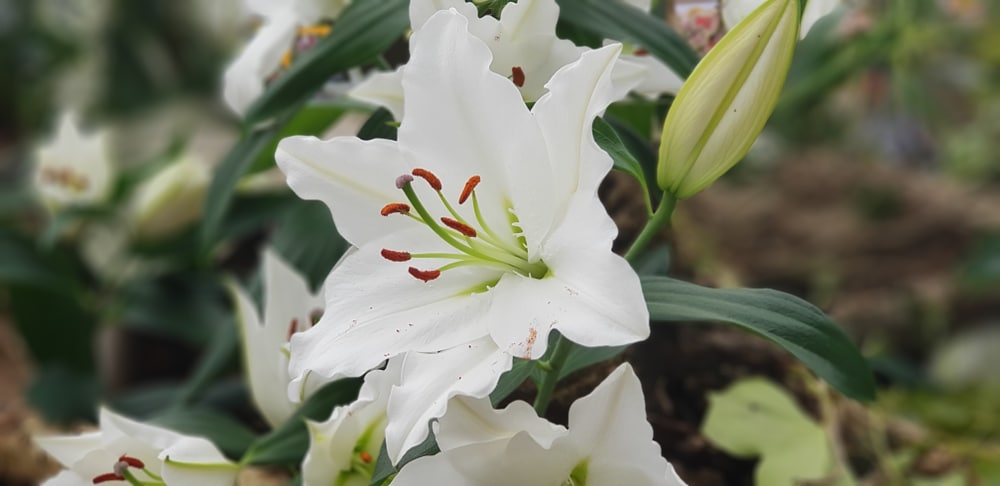
In Chinese culture, lilies represent good fortune and happiness and are even used to solve difficult situations or problems.
The lily is often gifted to women on their birthdays or their wedding day as the flower is perceived as “a bringer of sons” and traditionally, Chinese culture favored boys over girls, though attitudes are evolving in time.
The lily is also the flower of love, and in China, it represents 100 years of love.
As well as having metaphorical meaning, lilies are also used in Chinese medicine.
Dried bulbs are used in soups to treat intestinal discomfort, and can even be applied to bruises and cuts. Lily flowers are also consumed in the hot summer months to help reduce body heat.
5. Orchids

In traditional Chinese culture, the orchid represents good taste and beauty. Simple and elegant, its fragrance is never overpowering, symbolizing humility and nobility.
A good friend may be called an ‘orchid’ friend, as a reference to the orchid’s enduring beauty and understated elegance. In ancient China, the orchid was valued because it could withstand loneliness while remaining full of grace at all times.
The orchid is also associated with love and beauty and may be used to represent the love and loyalty of a married couple. When placed in a vase, orchids are a symbol of unity, and the flower also represents wealth and fortune in Chinese culture.
6. Chinese Plum Blossom
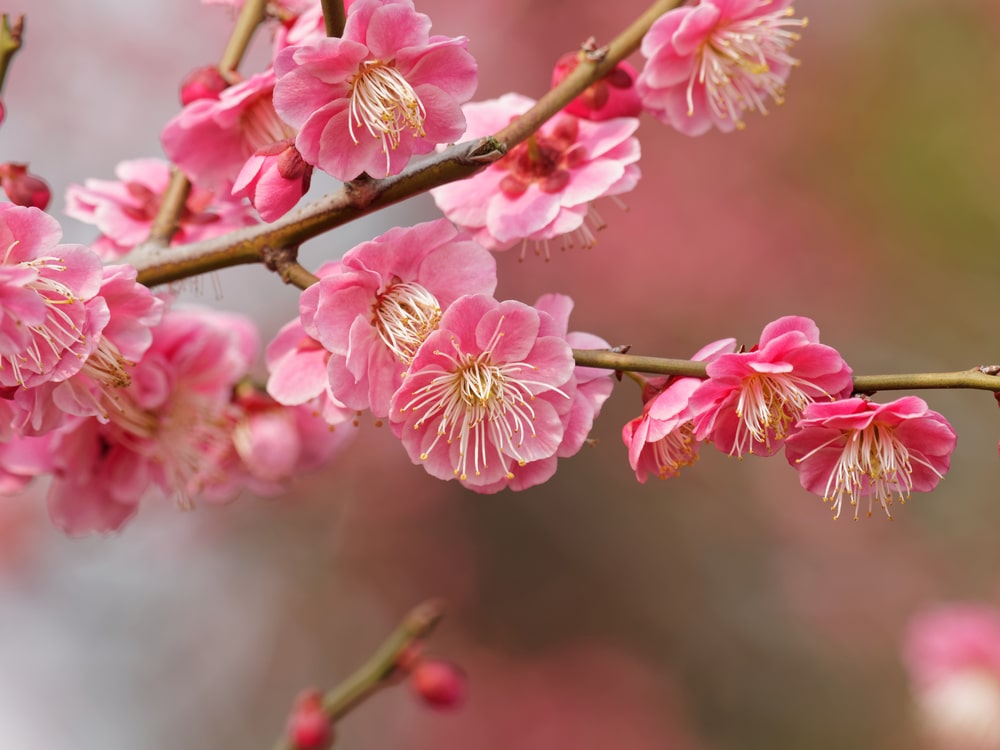
The Republic of China government designates the plum blossom as the national flower of Taiwan.
Known to blossom even in the dead of winter, the plum tree is known for its ability to flourish even in the harshest conditions, which is why it’s often celebrated as a symbol of vitality and life, and as a symbol of endurance through hardship.
In Chinese culture, the plum blossom is a metaphor for inner beauty and strength, with its ability to yield courage even in adverse conditions.
There is a Chinese saying that the fragrance of plum blossoms “comes from the bitterness and coldness.” Thus the plum blossom is often a symbol of hope, reminding people to brace themselves through winter and that spring will come.
7. Peony Flowers
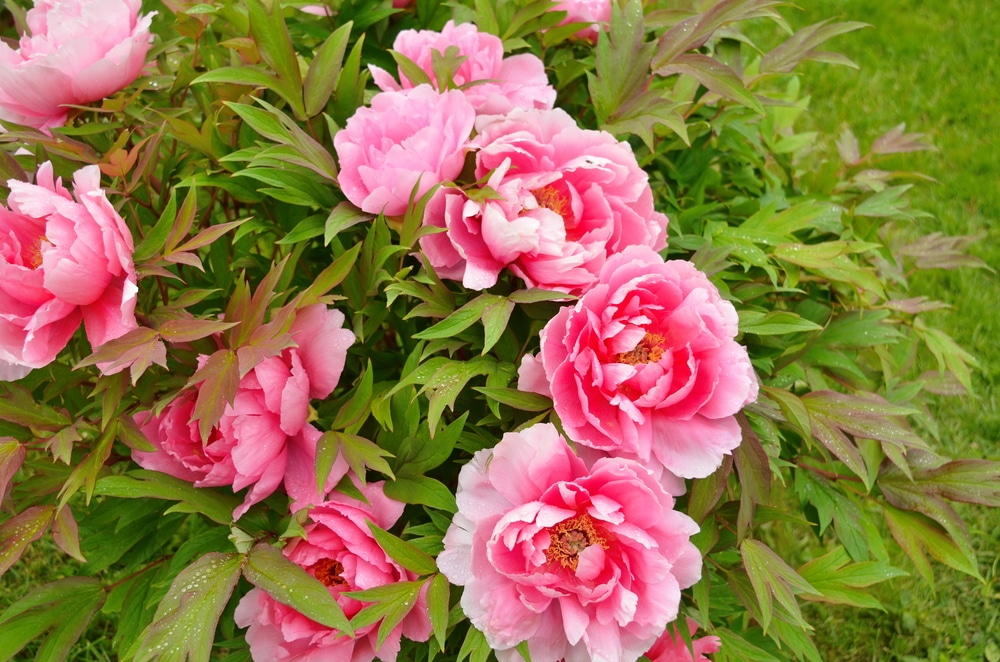
The Paeonia suffruticosa, or peony for short, is the traditional flower of China, along with the plum blossom.
This can be traced back to 1903, when the Qing dynasty declared the peony the national flower, though today the People’s Republic of China government has no legally designated national flower, however, unofficially the peony is still favored as the national floral symbol of China.
In Chinese culture, the peony is also known as “flower of riches and honor” or “king of the flowers”, and symbolizes prosperity and happiness.
Identified by their big petals that are often red or white in color, peonies were one of the first flowers that were ever cultivated in the country, and the ancient Chinese city Luoyang has long been a cultivation hub for peonies.
Peonies grown in Luoyang are said to be the finest in the country, and peony exhibitions and shows are still held there annually.
8. Hibiscus Flowers
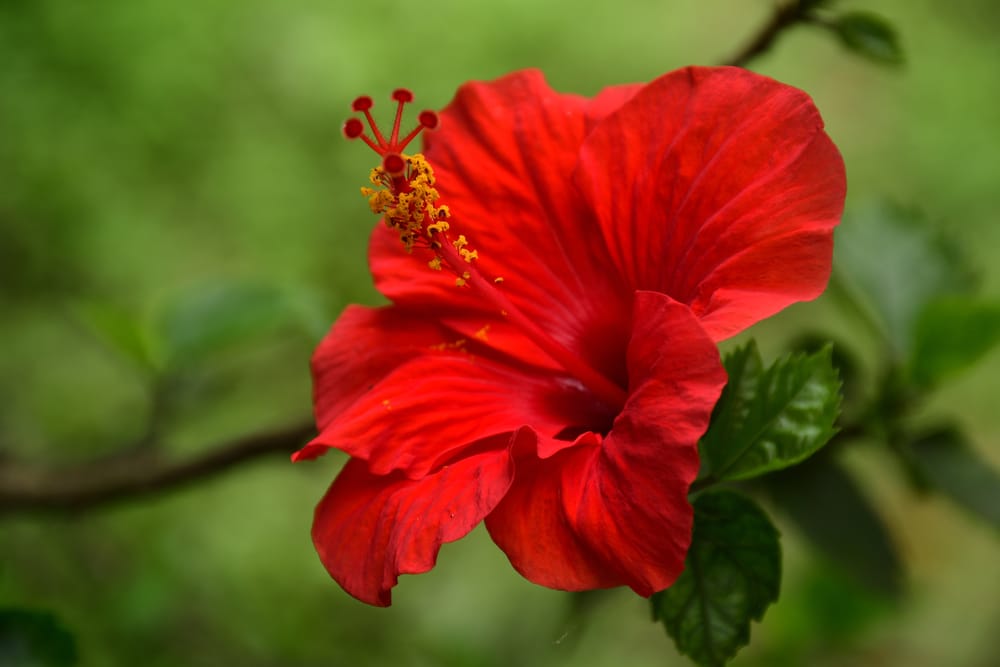
Part of the Malvaceae family of plants, Hibiscus are very popular in China, and are sometimes known as ‘Chinese hibiscus’ or ‘China rose.’ Hibiscus is widely grown in tropical and subtropical regions of the world and is thought to have originated in tropical Asia.
Hibiscus has several medical uses in Chinese herbology, and the petals are even used to make a black shoe polish or to make a women’s black hair dye.
An extract from the hibiscus plant has also been shown to function as an anti-solar agent by absorbing ultraviolet radiation, so it may have potential in cosmetology, too.
In China, Hibiscus flowers are usually gifted to both men and women and are often associated with fame and glory.
9. Camellia Flowers
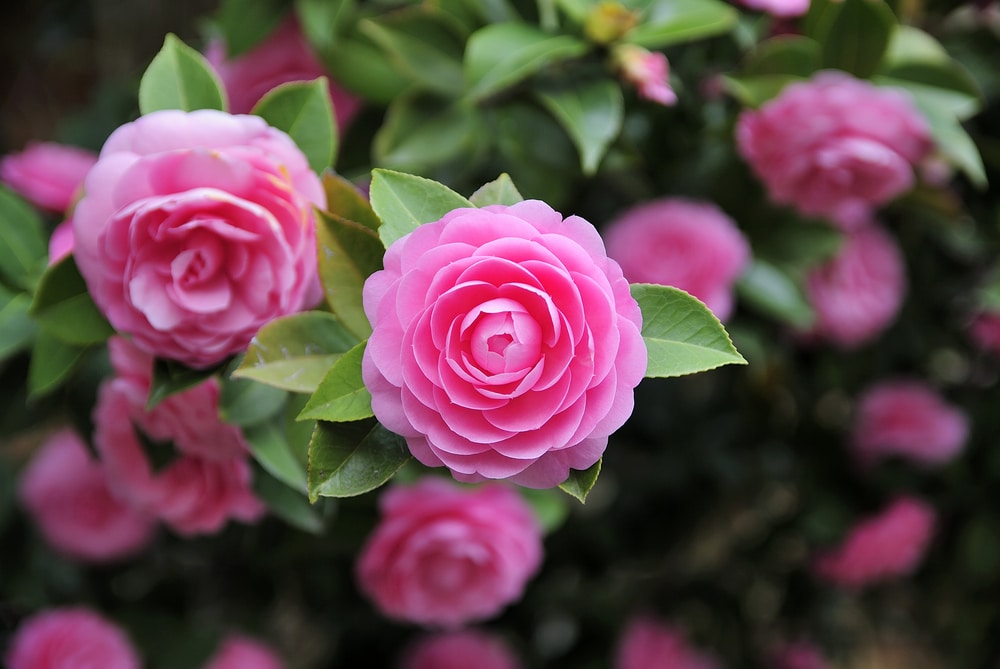
The camelia, known officially as the Camellia japonica L, is native to China and has appeared in paintings and porcelain in the country since the 11th century.
Early paintings of the Camellia featured a single red flower, though a single white flowering plant is shown in the scroll of the Four Magpies of the Song Dynasty.
In China, camellias are used in teas and oils, as the flowers are astringent, antihemorrhagic, and haemostatic.
When mixed with sesame oil, camellias are used in the treatment of burns and scalds and there is some evidence that the plant may have anticancer properties.
10. Azaleas
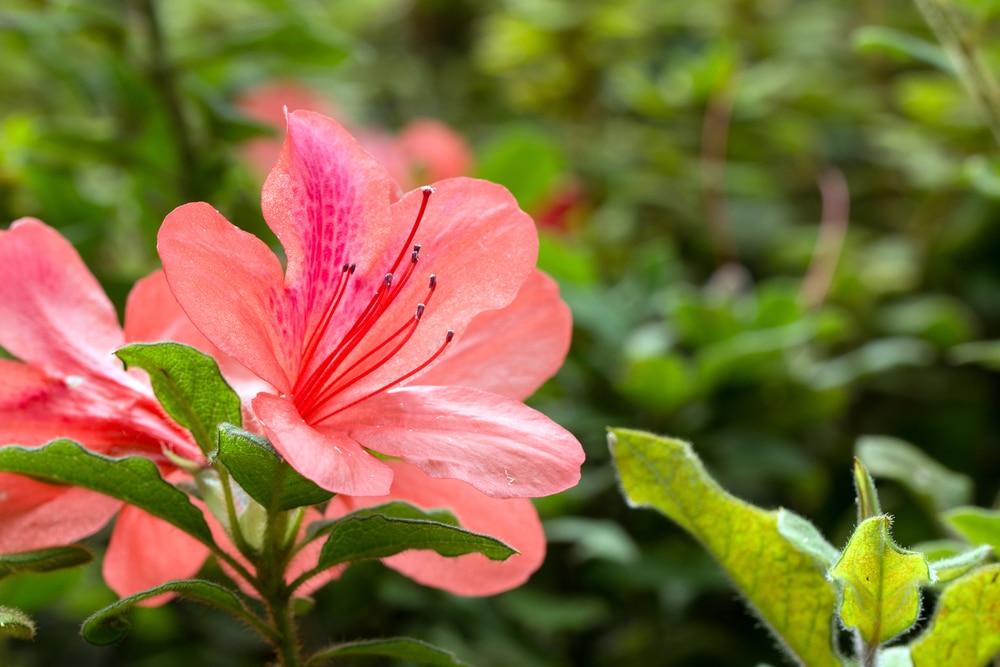
Known scientifically as Rhododendron Simsii Planch, the azalea is known as “thinking of home bush” (sixiang shu) in Chinese culture and is immortalized in the poetry of Du Fu.
The azalea is also associated with womanhood and represents thoughtfulness and pensiveness. In his poetry, Du Fu famously depicted the flowers as “A Sea of Blood Red Azaleas”.
Azaleas are poisonous, bloom in spring, and are usually identifiable by their red, pink, cream, or white petals.
The Chinese are said to have 600 different varieties of azalea out of 800 worldwide varieties. Despite their poisonous qualities, the flowers are associated with happiness and prosperity in China, and they are the official flowers of several provinces in the country.
11. Sweet Olive Flowers
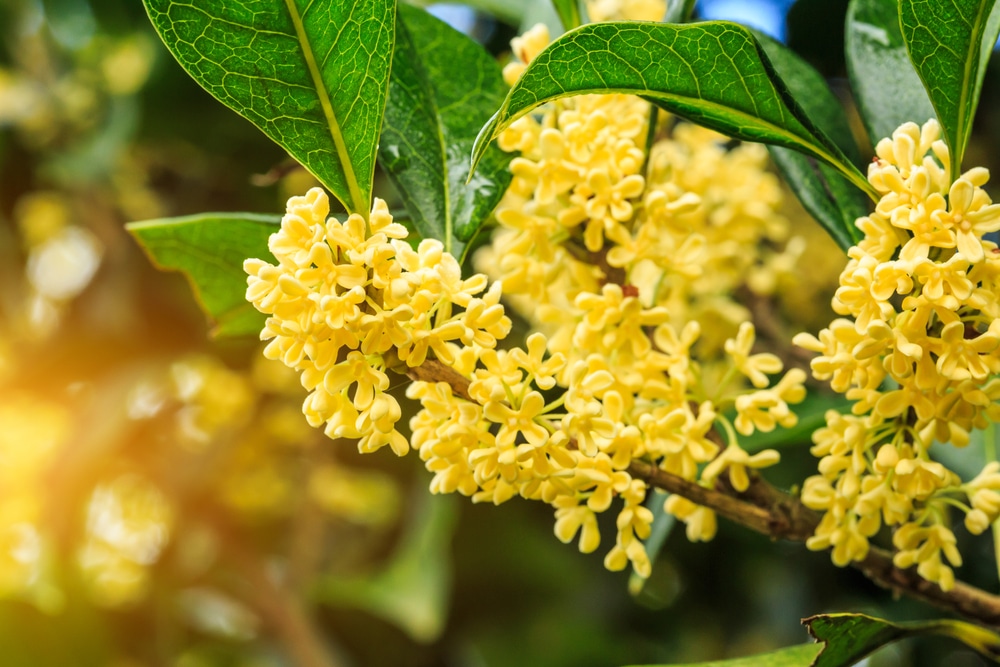
Known officially as Osmanthus fragrans, the sweet olive shrub is one of the 10 famous flowers in China and Taiwan and also symbolizes the month of August, it is also the city flower of Hangzhou.
Traditionally sweet olive symbolized Love and Romance, with Osmanthus used in old wedding customs when the bride prepared Sweet Osmanthus and Pomegranate pot plants before carrying them to her new family.
The plant is also associated with True Love and Faithfulness, Fertility, and Peace, and was often associated with “giving birth to noble children ” and having “many children and many grandchildren”.
Osmanthus Fragrans flowers are also known as ‘gui hua.’ These tiny dried yellow blossoms are among China’s most distinguished flower blossom fragrances and are frequently used in Chinese herbal teas.
12. Chinese Rose
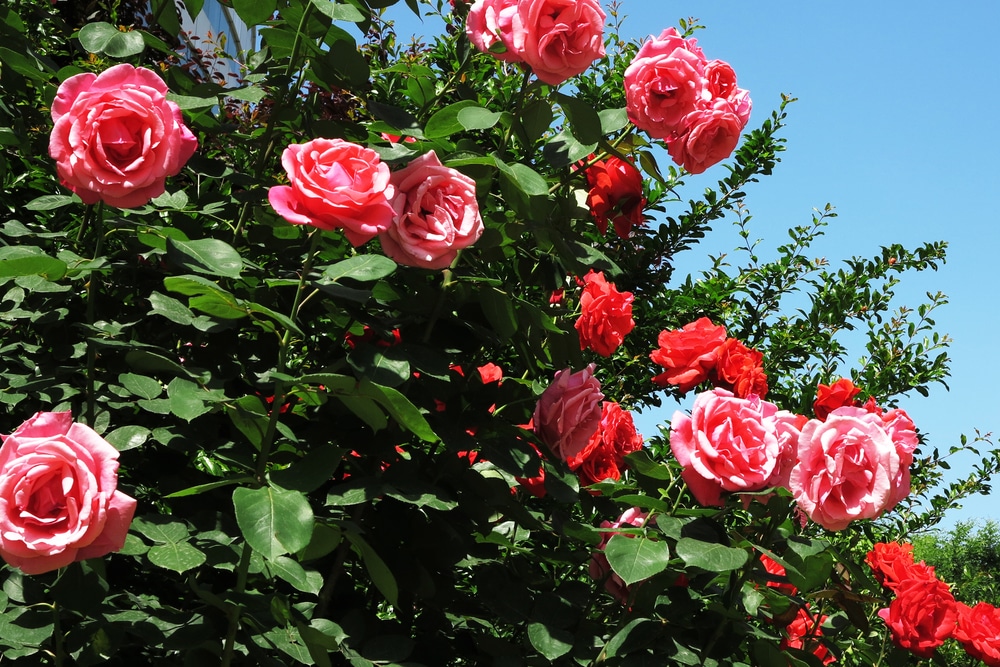
Chinese rose, or rosa Chinensis, is a member of the genus Rosa family and is native to Southwest China in Guizhou, Hubei, and Sichuan Provinces.
Rosa Chinensis has many uses, and the young vegetative plant parts, flower buds, and flowers are brewed and eaten as a kitchen herb in soup and other dishes.
From the rosehips, a thin fleshy layer that surrounds the seeds is eaten raw or cooked. The seeds provide an excellent source of Vitamin E, however, the seed hair has to be removed carefully and cannot get into the mouth or throat.
The seeds can be ground and mixed with flour or added to other foods.
Flowers in Chinese Culture
China’s spring festival is dedicated to the Chinese goddess of flowers, and each year, Chinese people gather to celebrate the new year and changing of the seasons.
China also has a flower associated with different months, though this can vary in different provinces.
Some common associations are:
- January – Plum Blossom – Flower of Strong, Noble, and Modest
- February – Apricot Blossom – Flower of Luck and Fortunate
- March – Peach Blossom – Flower of Longevity and Love
- April – Peony – Flower of Brightness, Glory, and Wealth
- May – Pomegranate Flower – Flower of Happy Marriage, Maturity, and Wealthy
- June – Lotus – Flower of Elegant, Harmony, and Pure
- July – Balsamine – The Incarnation of Phenix and the Flower of Energy
- August – Osmanthus Blossom – Flower of Moon, Noble, Honor, and Champion
- September – Chrysanthemum – Flower of Longevity, Auspiciousness, and Decency
- October – Hibiscus – Flower of Virtue and Gorgeousness
- November – Narcissus – Flower of Purity and Blessing
- December – Winter Sweet – Flower of Fearless, Persistent and Unbending
Flowers are also sometimes categorized according to the seasons. Spring is often associated with Orchids and Magnolias, summer with Lotus and Peonies, Autumn with Chrysanthemums, and Winter with Bamboo and Plum blossom.
Negative Significance of Some Flowers
While the above flowers all have positive meanings to them, some flowers have negative connotations in Chinese culture, such as:
Duckweed
Duckweed is a plant without roots, and, seen as the Chinese people are known for valuing family, duckweed is perceived negatively as it goes against the Chinese values of family and unity.
Blooming Trees
Blooming trees have a tendency to spread out and scatter everywhere, which is why they are often associated with unfaithfulness in Chinese culture.
White Iris
These delicate white flowers are not necessarily a negative symbol, but they’re usually sent to mark somebody’s death or are used at funerals.
The white iris is usually sent in a wreath and sent to the family of the deceased person, along with a white envelope containing money that will be used to help pay for the funeral costs.
Colors and their Symbols in Chinese Culture
Pink Flowers: The color pink has many positive connotations including, life, celebration, and joy.
Yellow Flowers: Yellow flowers are usually used to represent wealth, prosperity, and wisdom.
White Flowers: White is used as a symbol of purity, peace, and innocence.
Blue Flowers: Blue flowers are considered a sign of uniqueness, rarity, and singularity.
Purple Flowers: Purple represents unity, optimism, and elegance.
Red Flowers: Red flowers are a sign of compassion, life, and longevity.
Final Say
China has many different native flowers, and each will represent different meanings, be used in different contexts, or have different medicinal properties depending on the region of China.
While some flowers are considered to represent China as a nation, others are used to identify different cities or provinces, as well as the 12 months of the year, and the different seasons.
If you take a look at Chinese art, poetry, decor, or traditional clothing and fabric, you’ll notice that flowers feature heavily.
In China, flowers are also valued not only metaphorically, but in terms of their medicinal qualities, too. Some flowers are used to heal wounds and bruises, whereas others are used in soups, teas, and other dishes and have many health benefits.
While Chinese people may have different associations or perceptions of the flowers on this list, and opinions will differ in terms of which flower is truly the national symbol of China, one thing most Chinese people will have in common is a deep appreciation of flowers and their symbolism.
The value of flowers in Chinese culture is so profound that without realizing we have come to associate many flowers – particularly blossoms – with Chinese landscapes, art, and traditional dress.